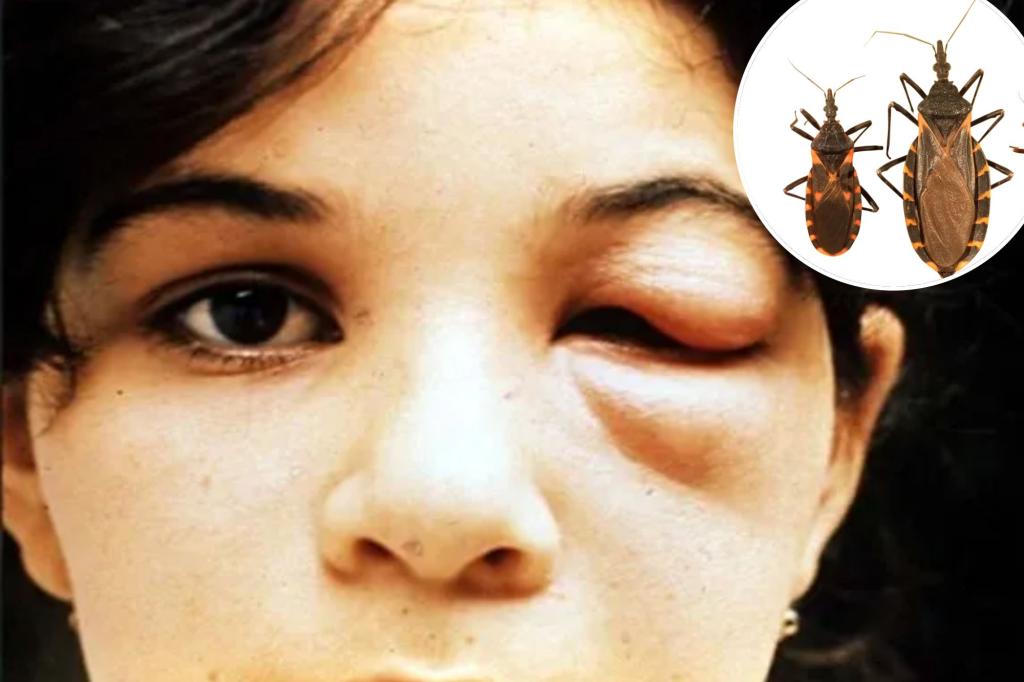A seemingly innocent kiss could turn deadly. Health experts are sounding the alarm about the kissing bug disease, a parasitic infection spread by triatomines, also known as kissing bugs. These bugs, notorious for biting people on the face, are now present in 32 U.S. states. At least eight local transmissions have prompted scientists to urge the CDC and WHO to declare this life-threatening illness endemic in the United States.
This article delves into everything you need to know about kissing bugs and the Chagas disease they transmit. You’ll learn about the symptoms, stages, and available treatments for Chagas disease. Additionally, you’ll discover why scientists advocate for declaring Chagas disease endemic in the U.S. for improved surveillance and public health responses.
Stay informed and take proactive measures to protect yourself and your loved ones from this emerging health threat.
What are Kissing Bugs?
Kissing bugs, scientifically known as triatomines, are small, black-and-brown insects that feed on the blood of people, pets, and wild animals. Their nickname comes from their habit of biting people on the face, particularly around the mouth and eyes. According to the New York Post, kissing bugs are prevalent in 21 countries, including Mexico, and parts of Central and South America, where they are considered endemic.
In the U.S., 11 different species have been identified nationwide, with Texas, New Mexico, and Arizona reporting the highest number of sightings and species diversity. While not all kissing bugs carry the parasite that causes Chagas disease, their presence and potential to transmit the disease raise concerns for public health officials.
What is Chagas Disease?
Chagas disease is a potentially deadly infection caused by the parasite Trypanosoma cruzi. This parasite lives in the guts of approximately 55% of kissing bugs in the U.S. According to the CDC, the parasites usually infect people through the bugs’ feces, typically left near a bite wound. The disease can also spread through organ donations, blood transfusions, or from mothers to babies during pregnancy.
“This is a disease that has been neglected and has been impacting Latin Americans for many decades,” Norman Beatty, a Chagas expert and epidemiologist, told the New York Post. “But it’s also here in the United States.”
Worldwide, over 7 million people are estimated to carry the parasite, resulting in more than 10,000 deaths each year. In the U.S., the CDC estimates that around 300,000 people have Chagas disease. While most cases have been concentrated in the South, these insects are steadily expanding their territory northward.
What are the Symptoms of Chagas Disease?
Chagas disease progresses in two distinct phases, each with its own set of symptoms. The acute phase occurs in the weeks or months following the initial infection. During this stage, most individuals experience no symptoms at all. However, if symptoms do appear, they can include:
- Fever
- Fatigue
- Body aches
- Headache
- Rash
- Loss of appetite
- Diarrhea
- Vomiting
- Eyelid swelling
The chronic phase can last for years or even an entire lifetime. Like the acute phase, most individuals remain asymptomatic. However, some will develop severe health complications. One to three decades after infection, up to a third of those infected may experience heart issues, while about 1 in 10 may develop digestive problems such as an enlarged esophagus or colon.
Is Chagas Disease Treatable?
Yes, Chagas disease is treatable, but timing is crucial. During the acute phase, medications such as benznidazole and nifurtimox can effectively kill the parasite and alleviate symptoms. However, once the disease reaches the chronic phase, a complete cure is no longer possible. Treatment then focuses on managing the symptoms and preventing further complications.
Heart problems may require medication, surgery, or pacemakers, while digestive issues might necessitate dietary changes or surgical intervention. Because early symptoms are often unnoticed, many people are unaware of their infection, making early treatment a significant challenge.
“The disease is definitely underdiagnosed,” Salvador Hernandez, a cardiologist, told the New York Post. “If we screened for it and caught it early, most patients could be cured.”
Why Do Scientists Want Chagas Declared Endemic in the US?
While Chagas disease is not as widespread in the U.S. as in other parts of the Americas, epidemiologists argue that it is time for the CDC and WHO to officially declare it endemic. Doing so would improve surveillance, research, and public health responses. According to the New York Post, acknowledging the endemicity of Chagas disease in the United States is crucial for achieving global health goals, emphasizing the need for heightened awareness among the public.
Conclusion
The kissing bug disease, or Chagas disease, is an emerging health threat in the United States, with cases now reported in 32 states. While most people may not experience initial symptoms, the chronic phase can lead to severe heart and digestive problems. Early diagnosis and treatment are crucial for a cure, but many remain unaware of their infection until complications arise.
Scientists are urging the CDC and WHO to declare Chagas disease endemic in the U.S. to improve surveillance, research, and public health responses. By raising awareness and implementing proactive measures, individuals and communities can take steps to protect themselves and prevent the spread of this potentially deadly disease.

Leave a Reply